Before we dive into this step, let’s take a moment to review the steps that got us here in order to set the stage for what comes next.
In Step 1 (Stage of Story Development), we outlined four stages in the creative process – Inspiration, Development, Exposition, and Storytelling. In novels, each of these stages touches on all four aspects of story – Characters, Plot, Theme and Genre. And so, our step by step method of story development begins with Inspiration.
Each stage starts with general steps that lay the groundwork for that stage, which are then followed by specific steps about your Characters, Plot, Theme and Genre before moving on to the next stage.
Step 2 (Get Out of My Head!) was about jotting down any and all creative ideas you may already have for your story so you can clear your mind and see the material in front of you in preparation for finding the center of your story.
Step 3 (What’s The Big Idea?) is about boiling down all your existing story material into a single log line – a one sentence description of what your story is about. This becomes the lighthouse beacon that defines the reason for and center of your story that will guide all your future creative endeavors.
Step 4 (The Creativity Two Step) presents a method to generate a wealth of new material for your growing story. Guided by your log line, you apply a question and answer system to your story ideas from Step 2 that alternates between logical analysis and the passion of the Muse.
Here is Step 5, we’ll once again clarify things by boiling them down to create a synopsis of our story so far.
Pulling It All Together
In Step 2, you jotted down any and all story ideas you may have already had for your novel. In Step 4, you probably generated a huge number of additional creative ideas for your novel. (If not, repeat Step 4 until you do!)
Problem is, the resulting collection of notions for your story from Steps 2 and 4 probably ranges far and wide, resulting in a hodgepodge of interesting concepts and schemes, all out of order and jumbled up in something of a chaotic mess.
So, before we go on into future steps, we need to do a little necessary housekeeping lest things get out of hand. Just as we boiled down your Step 2 ideas into a single log line, in this step we’ll pull together all the material you’ve created so far into a more manageable form: synopsis of your novel,
A synopsis is like a map of the ground your story is going to cover, noting all the landmarks and important things that happen at them. Just as we originally had you jot down any ideas you already had in Step 2 and then boil them down to a single log line in step 3, we’re now going to take all the creative concepts you spewed out in Step 4 and pull them together into a this single conversational description of your novel’s content.
The length of a synopsis is completely variable. The shortest form would be a thumb-nail sketch, perhaps just a paragraph long – the minimum necessary to outline the key elements and scope of your story.
Typically, the longest synopsis is usually no more than a page. So, don’t feel compelled to write more than comfortably flows, or to limit yourself to less than you have. For example, Tolkien created whole worlds, histories, cultures, and languages in synopsis form before putting any of it in story form.
Our goal here is simply to take that unwieldy shopping list of story elements from Steps 2 and 4 and to turn it into conversational language that, more or less, describes all the interesting people, events, topics, and stylistic flourishes you’d like to include in your novel, as if you were talking about your story to a friend, rather than actually trying to tell your story.
So, for this step, your task is to refer to all that you created so far and describe it as if you were telling someone about your story who was very interested in it and wanted to hear every juicy detail.
“My novel is about….” There. I started it for you. Now, go to town. Guided by your log line that describes the crux and center of your novel’s concept, write your synopsis of every interesting and/or essential thing that is going to be in it, based on the work you’ve done in the last step.
Sample Synopsis (from my own work):
Snow Sharks: Don’t Eat Red Snow
The government has been developing a new breed of shark that lives in snow rather than water for use as mobile land mines in places such as Siberia or the Arctic. A transport plane carrying them crashes in a storm high in the Rocky Mountains, just above a high-priced ski resort for the rich.
Normally closed at this time, the resort was opened for a powerful client so that his college-age daughter and her friends could have a ski vacation. The sharks gradually slither down from the heights into the bowls shaped resort and begin feating on the kids.
Characters include the handsome but stupid jock, the stuck-up daughter of the patron, a cheerleader, a nerdy science geek who is the tag-along token outcast, and the usual crew of stereotypical college kids.
Scenes include night skiing where the proprietors had installed disco lights on the ski run, so they light up and create changing colored patterns under the snow. During the night skiing, we see one of the kids ski by, followed by the silhouette of against the disco lights of a snow shark following him. This is the first attack that alerts them that something deadly is out there on the slopes.
In a later scene, the jock trying to escape by out-skiing the others when the sharks attack and leaving them to die. He ski-jumps over a chasm, looks back and laughs, looks forward and a snow shark has also jumped the chasm by shooting down the hill on the other side and is coming right for him. The skis land solidly on the other side of the chasm with nothing but boots attached, and bloody stumps sticking out of them.
The government sees this as a great opportunity to see how effective the sharks are and send in an agent to document but not interfere. He ends up dying a horrible death that both divulges to the kids what the government has done and provides the idea of how to escape.
Ultimately, they learn the sharks can no longer live in water, only in snow, so they blow up a geothermal spring to flash-melt the snow above the bowl-shaped valley, ironically drowning the sharks, and barely escaping dying in the flood waters themselves.
Armed with this rather cliche example, its time to write the first synopsis for your own novel. As we continue through our step by step method, we’ll pause after each major new creative effort to fold what you’ve just developed into a revised synopsis. In this way, you have a story right from the beginning that is continually evolving, step by step, into your finished novel.
Next, in Step 6, we’ll stand back a bit to look at the first draft of your synopsis just as your readers will, looking for any holes they might see. Then in the step after that, we’ll begin to fill them.
 This article was based on our StoryWeaver Step-by-Step Story Development Software that guides you through more than 200 interactive Story Cards from concept to completion of your novel or screenplay. Just $29.95 for Windows or Macintosh.
This article was based on our StoryWeaver Step-by-Step Story Development Software that guides you through more than 200 interactive Story Cards from concept to completion of your novel or screenplay. Just $29.95 for Windows or Macintosh.


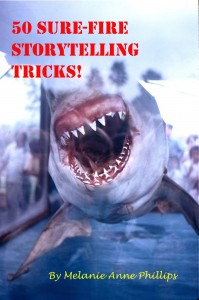
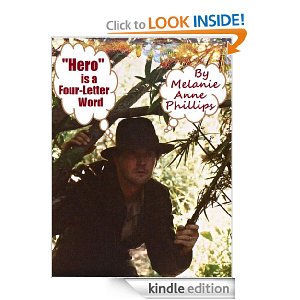
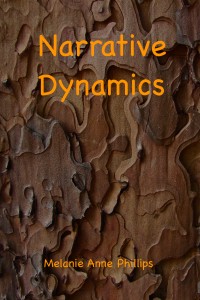
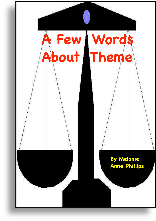
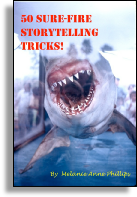


You must be logged in to post a comment.